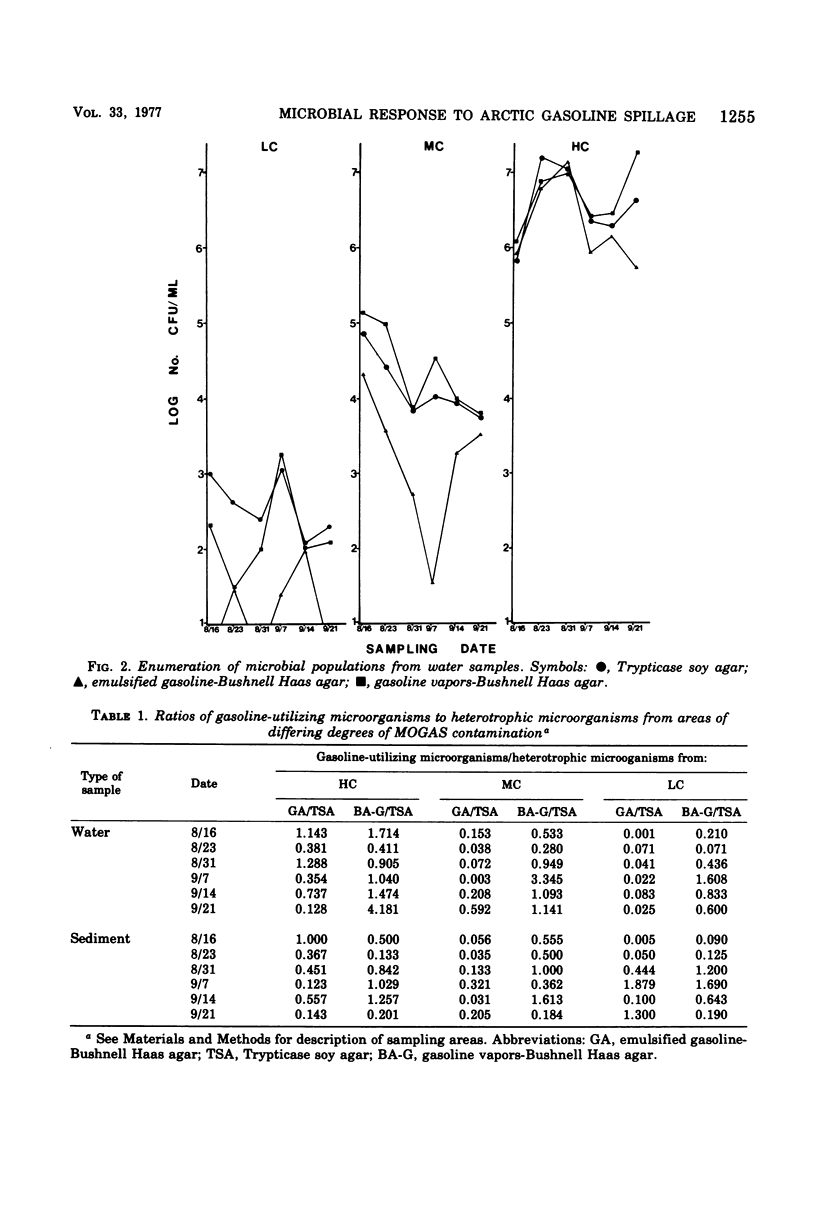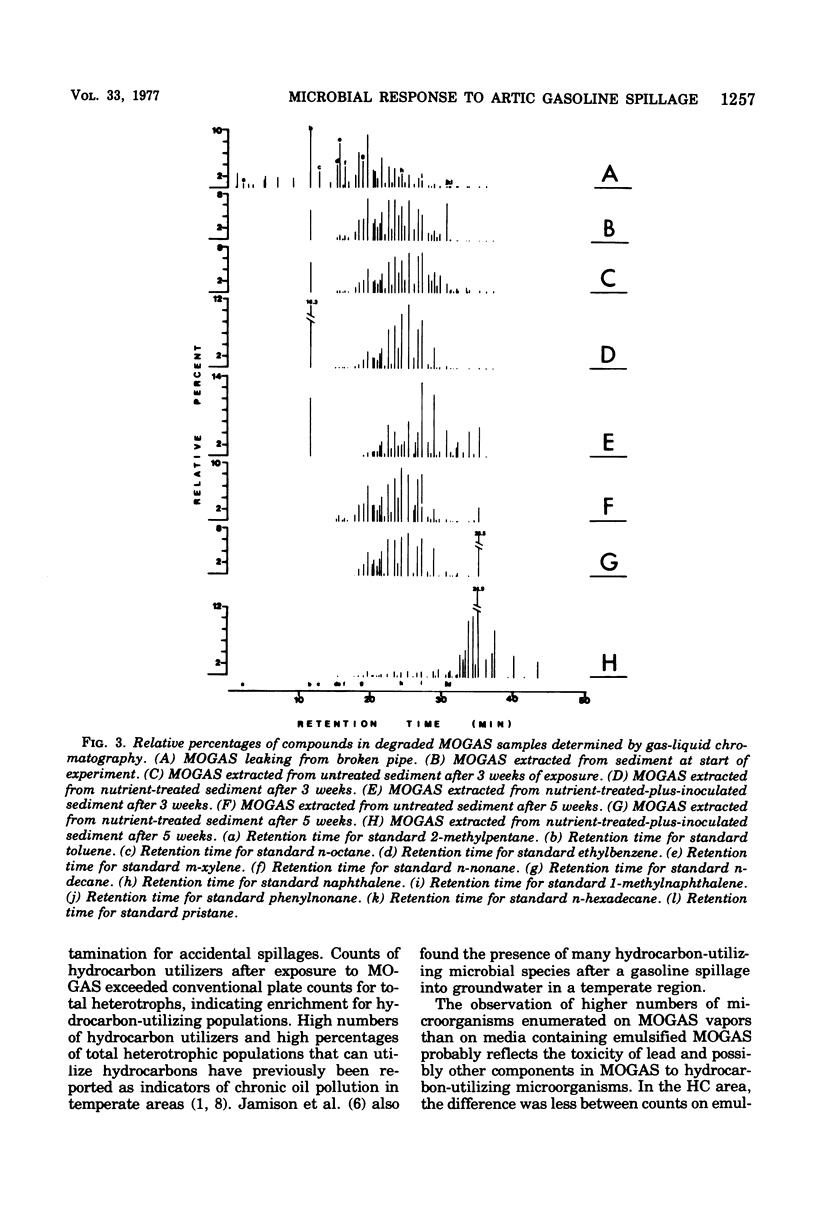Abstract
The response of microorganisms to an accidental spillage of 55,000 gallons of leaded gasoline into an Arctic freshwater lake was studied. Shifts in microbial populations were detected after the spillage, reflecting the migration pattern of the gasoline, enrichment for hydrocarbon utilizers, and selection for leaded-gasoline-tolerant microorganisms. Ratios of gasoline-tolerant/utilizing heterotrophs to “total” heterotrophs were found to be a sensitive indicator of the degree of hydrocarbon contamination. Respiration rates were elevated in the highly contaminated area, but did not reflect differences between moderately and lightly contaminated areas. Hydrocarbon biodegradation potential experiments showed that indigenous microorganisms could extensively convert hydrocarbons to CO2. In situ measurement of gasoline degradation showed that, if untreated, sediment samples retained significant amounts of gasoline hydrocarbons including “volatile components” at the time the lake froze for the winter. Nutrient addition and bacterial inoculation resulted in enhanced biodegradative losses, significantly reducing the amount of residual hydrocarbons. Enhanced biodegradation, however, resulted in the appearance of compounds not detected in the gasoline. Since the contaminated lake serves as a drinking water supply, treatment to enhance microbial removal of much of the remaining gasoline still may be advisable.
Full text
PDF






Selected References
These references are in PubMed. This may not be the complete list of references from this article.
- Atlas R. M., Bartha R. Inhibition by fatty acids of the biodegradation of petroleum. Antonie Van Leeuwenhoek. 1973;39(2):257–271. doi: 10.1007/BF02578858. [DOI] [PubMed] [Google Scholar]
- Dibble J. T., Bartha R. Effect of iron on the biodegradation of petroleum in seawater. Appl Environ Microbiol. 1976 Apr;31(4):544–550. doi: 10.1128/aem.31.4.544-550.1976. [DOI] [PMC free article] [PubMed] [Google Scholar]
- Horowitz A., Gutnick D., Rosenberg E. Sequential growth of bacteria on crude oil. Appl Microbiol. 1975 Jul;30(1):10–19. doi: 10.1128/am.30.1.10-19.1975. [DOI] [PMC free article] [PubMed] [Google Scholar]
- Walker J. D., Colwell R. R. Enumeration of petroleum-degrading microorganisms. Appl Environ Microbiol. 1976 Feb;31(2):198–207. doi: 10.1128/aem.31.2.198-207.1976. [DOI] [PMC free article] [PubMed] [Google Scholar]
- Walker J. D., Colwell R. R. Long-chain n-alkanes occurring during microbial degradation of petroleum. Can J Microbiol. 1976 Jun;22(6):886–891. doi: 10.1139/m76-128. [DOI] [PubMed] [Google Scholar]
- Walker J. D., Colwell R. R. Measuring the potential activity of hydrocarbon-degrading bacteria. Appl Environ Microbiol. 1976 Feb;31(2):189–197. doi: 10.1128/aem.31.2.189-197.1976. [DOI] [PMC free article] [PubMed] [Google Scholar]


